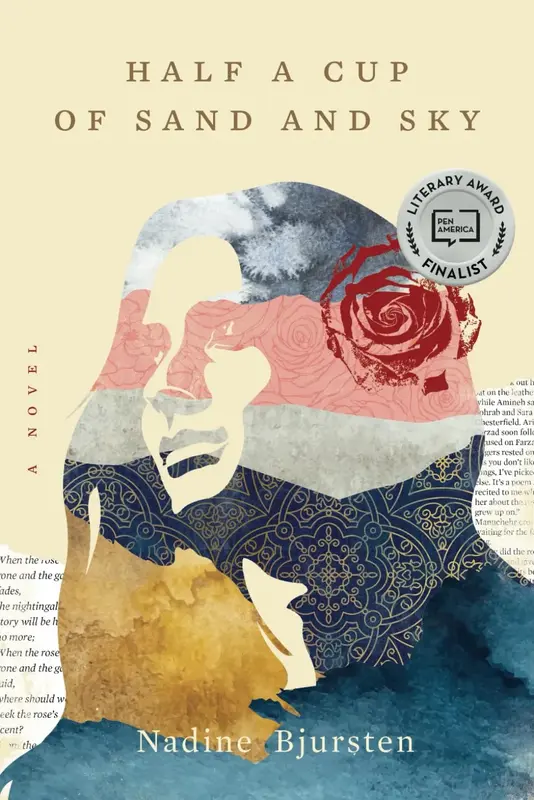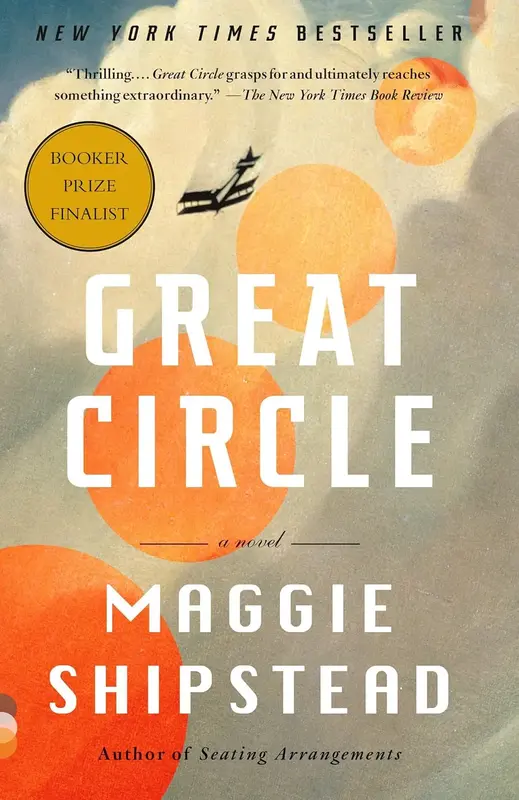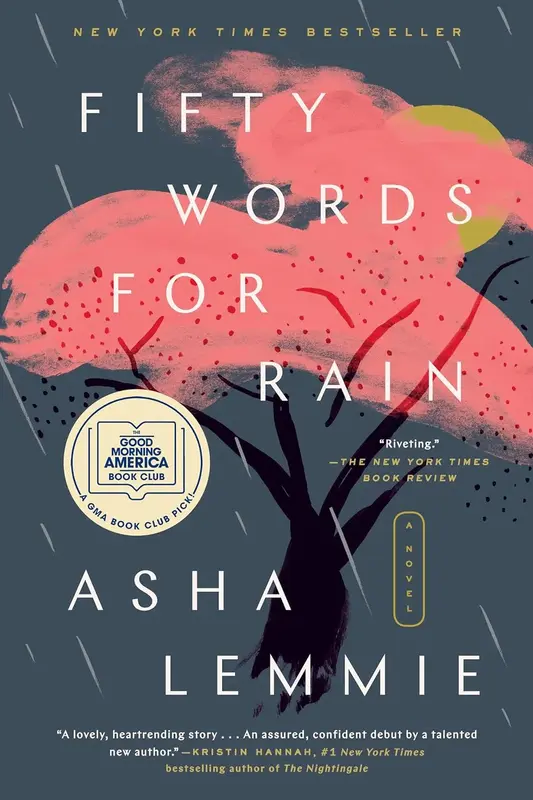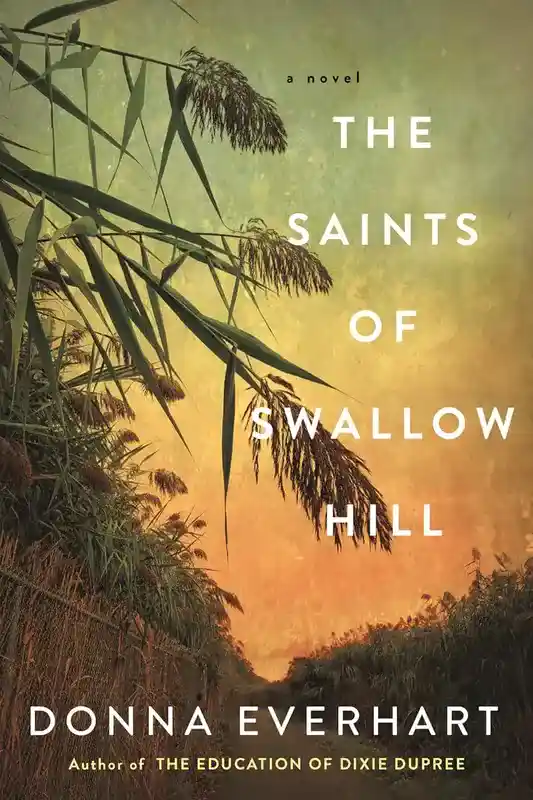This post may contain affiliate links. Read more here.
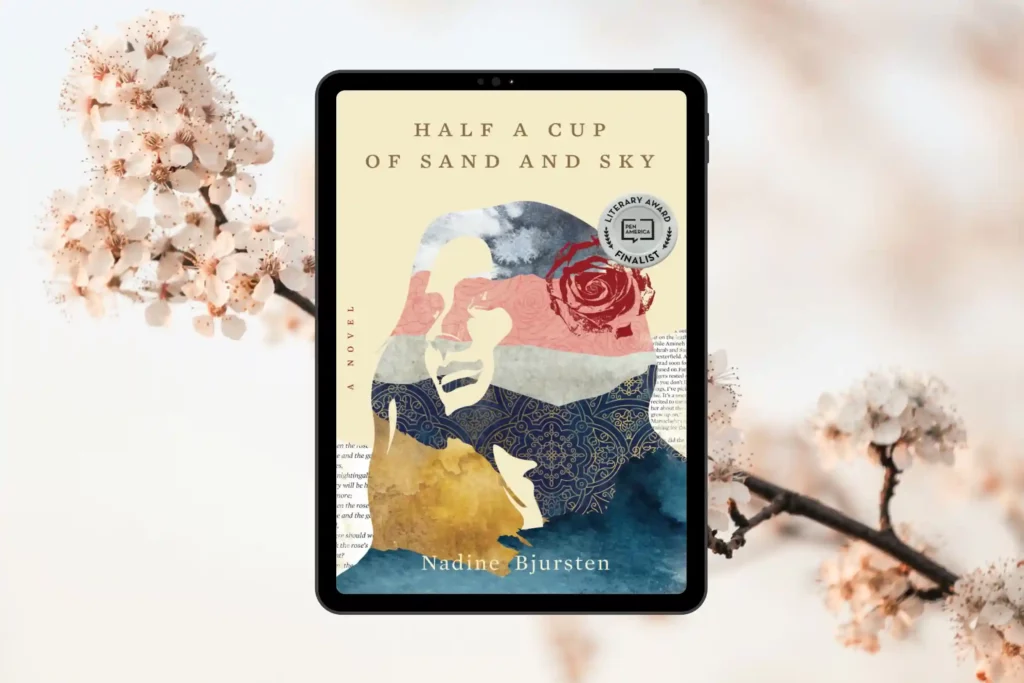
Book club questions for Half a Cup of Sand and Sky by Nadine Bjursten explore the themes of identity, political turmoil, and personal transformation. Readers are prompted to delve into discussions about Amineh’s journey and how her connection with Farzad shapes her perspective on life.
This is a personal, historic story that will inspire, motivate, and captivate you.
Amineh is really enjoyable to read about. She’s relatable, tough, and likeable. Her story is well written and a quick read. It’s not an action packed thriller but it’s interesting and holds your attention right from the beginning. The author has done a beautiful job creating a visual of a beautiful country and culture.
Be sure to let me know your thoughts about the novel! Feel free to comment below.
Half a Cup of Sand and Sky by Nadine Bjursten
In this blog post you will find the discussion questions for Half a Cup of Sand and Sky by Nadine Bjursten.
The discussion may encourage book club members to share their interpretations of the novel’s exploration of literature, nostalgia, and the search for meaning amidst societal upheaval.
Have a wonderful book club discussion! ✨
About the Author | Book Club Questions
About the Story
Half a Cup of Sand and Sky is set in 1977, during the anti-shah protests at Tehran University. The protagonist, Amineh, stands apart from her peers, who are focused on shaping the future of their country. Instead, Amineh is captivated by the literature of another era and nostalgic for her past experiences of rose harvests and Rumi poetry evenings under the desert sky.
A chance encounter with Farzad, an opposition leader and nuclear disarmament activist, unexpectedly thrusts Amineh into a life she didn’t choose. As the political situation in Iran worsens, Amineh reevaluates her perspective on life and discovers that what she’s been seeking may not be in the past after all.
The novel has received acclaim for its rich portrayal of characters and its insightful examination of Iranian history.
About the Author
Nadine Bjursten’s journey into writing took an unexpected turn right after she graduated from Temple University in Philadelphia. Despite initially gearing up for a job in New York, she found herself drawn to cultural magazines, eventually leading her to La Paz, Bolivia, where she became the editor-in-chief of Bolivian Times.

Over the years, she has steered various publications in New York and Washington, DC, delving into topics ranging from marketing to arms control. Amidst raising her twin daughters for the past twelve years, Nadine has dedicated her time to researching, writing, and exploring countries like Iran and Russia.
She’s the accomplished author of Half a Cup of Sand and Sky, previously known as By These Limbs, recognized as a finalist for the Pen Bellwether Prize for Socially Engaged Fiction and acknowledged in prestigious literary competitions. Her other notable works include The Point Where the Light Breaks, securing the second spot in the Geneva Literary Prize.
Book Club Questions for Half a Cup of Sand and Sky
Disclaimer: the following discussion questions contain spoilers, so proceed with caution if you haven’t finished the book yet.
- The novel is set against the backdrop of the anti-shah protests in Tehran during 1977. How does the political turmoil in Iran influence the characters’ lives and choices? In what ways does the author use historical events to shape the narrative?
- Amineh is portrayed as a unique character who deviates from the typical aspirations of her peers during the protests. How does her focus on literature, rose harvests, and Rumi poetry set her apart? How does this perspective evolve throughout the story?
- The chance encounter with Farzad, an opposition leader and nuclear disarmament activist, propels Amineh into a different life. How does this unexpected turn of events impact her character and the overall trajectory of the story?
- Amineh’s struggle for acceptance and love is central to the story. How does her perception of family and home evolve throughout the novel? In what ways does the book she is writing reflect her personal struggles?
- The desert village of Qamsar, known for rose oil production, plays a significant role in Amineh’s childhood. How does this setting shape her character, and what impact does it have on her life in Tehran and subsequent homes? Explore the symbolism of the rose in the story.
- Discuss the influence of Iran’s ever-changing politics on the characters. Were you familiar with Iran’s political history before reading the book? What surprised you, and did you notice any parallels with the political history of other countries, such as the United States?
- The book spans over two decades, and readers witness Amineh’s growth, love, loss, and challenges. How does the author depict the passage of time, and how does it contribute to the character development of Amineh?
- Amineh’s journey involves themes of love, loss, and personal transformation. Which aspects of her story resonated with you the most, and how did her experiences shape your understanding of womanhood and resilience?
- The novel received praise for its exploration of Iranian history. In what ways did the book enhance your knowledge and understanding of the political and cultural context in Iran during the specified period?
- The narrative includes a time jump that fast-forwards to a couple of decades later. How did this narrative choice affect your connection with Amineh and the overall flow of the story? Did it enhance or detract from your reading experience?
- The novel delves into the portrayal of Islam, with Jalalod-Din as a pious character. How does the book’s depiction of Islam compare to mainstream portrayals in Western media? Were you surprised by the significance of mystic poets in Iranian culture?
- Cooking holds great significance for Amineh, particularly the concept of letāfat, the tender touch. Consider the cultural aspects of preparing a meal and explore whether there are similar notions in Western culture. Share any meal scenes that resonated with you.
- Reflect on your knowledge of nuclear arms control and disarmament activism before reading the book. Did anything surprise you, and how does Amineh’s perspective on Farzad’s activism change throughout the novel?
- Amineh carries guilt over her parents’ death. How does this guilt shape her worldview and actions? Consider how loss affects other characters in the novel and whether guilt plays a role in their experiences and transformations.
- How did the author’s background in nuclear arms control and disarmament diplomacy influence the portrayal of Farzad’s character and the exploration of nuclear weapons warfare in the story?
- The book delves into the cultural aspects of Iran, including references to Persian literature, poets, and culinary delights. How did these cultural elements enrich the storytelling and provide a deeper understanding of the characters and their experiences?
- Were there any specific passages from the book that stood out to you? Share your favorite quotes and explain why they caught your attention.
- Identify your favorite character and discuss the character you empathized with the most. How did they change by the end of the novel? Were there any characters you disliked, and why?
- Compare Amineh’s relationships with Farzad and Patrik. Do you believe Amineh and Farzad were well-suited for each other? Share your thoughts on Amineh’s choices in her relationships.
- How did you feel about the ending of the novel? Do you have any lingering questions or aspects of the story that you would like to discuss further?
- Would you recommend this book to others? Provide reasons for your recommendation, including any caveats. Consider what kind of reader would most enjoy this book.
- How did your personal experience with “Half a Cup of Sand and Sky” align or differ with a book club member? What elements of the story left a lasting impression on you?
Additional Recommendations
Hope you enjoyed the book club discussion questions and reading guide for Half a Cup of Sand and Sky by Nadine Bjursten.
Here are some more of my book club recommendations with themes related to this book, along with their synopses:
Great Circle by Maggie Shipstead
The unforgettable story of a daredevil female aviator determined to chart her own course in life, at any cost: an “epic trip—through Prohibition and World War II, from Montana to London to present-day Hollywood—and you’ll relish every minute” (People).
After being rescued as infants from a sinking ocean liner in 1914, Marian and Jamie Graves are raised by their dissolute uncle in Missoula, Montana. There–after encountering a pair of barnstorming pilots passing through town in beat-up biplanes–Marian commences her lifelong love affair with flight.
At fourteen she drops out of school and finds an unexpected and dangerous patron in a wealthy bootlegger who provides a plane and subsidizes her lessons, an arrangement that will haunt her for the rest of her life, even as it allows her to fulfill her destiny: circumnavigating the globe by flying over the North and South Poles.
A century later, Hadley Baxter is cast to play Marian in a film that centers on Marian’s disappearance in Antarctica. Vibrant, canny, disgusted with the claustrophobia of Hollywood, Hadley is eager to redefine herself after a romantic film franchise has imprisoned her in the grip of cult celebrity. Her immersion into the character of Marian unfolds, thrillingly, alongside Marian’s own story, as the two women’s fates–and their hunger for self-determination in vastly different geographies and times–collide.
Fifty Words for Rain by Asha Lemmie
From debut author Asha Lemmie, “a lovely, heartrending story about love and loss, prejudice and pain, and the sometimes dangerous, always durable ties that link a family together.” —Kristin Hannah, #1 New York Times–bestselling author of The Nightingale
Kyoto, Japan, 1948. “Do not question. Do not fight. Do not resist.”
Such is eight-year-old Noriko “Nori” Kamiza’s first lesson. She will not question why her mother abandoned her with only these final words. She will not fight her confinement to the attic of her grandparents’ imperial estate. And she will not resist the scalding chemical baths she receives daily to lighten her skin.
The child of a married Japanese aristocrat and her African American GI lover, Nori is an outsider from birth. Her grandparents take her in, only to conceal her, fearful of a stain on the royal pedigree that they are desperate to uphold in a changing Japan. Obedient to a fault, Nori accepts her solitary life, despite her natural intellect and curiosity. But when chance brings her older half-brother, Akira, to the estate that is his inheritance and destiny, Nori finds in him an unlikely ally with whom she forms a powerful bond—a bond their formidable grandparents cannot allow and that will irrevocably change the lives they were always meant to lead. Because now that Nori has glimpsed a world in which perhaps there is a place for her after all, she is ready to fight to be a part of it—a battle that just might cost her everything.
Spanning decades and continents, Fifty Words for Rain is a dazzling epic about the ties that bind, the ties that give you strength, and what it means to be free.
The Saints of Swallow Hill by Donna Everhart
Where the Crawdads Sing meets The Four Winds as award-winning author Donna Everhart’s latest novel immerses readers in its unique setting—the turpentine camps and pine forests of the American South during the Great Depression. This captivating story of friendship, survival, and three vagabonds’ intersecting lives will stay with readers long after turning the final page.
It takes courage to save yourself…
In the dense pine forests of North Carolina, turpentiners labor, hacking into tree trunks to draw out the sticky sap that gives the Tar Heel State its nickname, and hauling the resin to stills to be refined. Among them is Rae Lynn Cobb and her husband, Warren, who run a small turpentine farm together.
Though the work is hard and often dangerous, Rae Lynn, who spent her childhood in an orphanage, is thankful for it–and for her kind if careless husband. When Warren falls victim to his own negligence, Rae Lynn undertakes a desperate act of mercy. To keep herself from jail, she disguises herself as a man named “Ray” and heads to the only place she can think of that might offer anonymity–a turpentine camp in Georgia named Swallow Hill.
Swallow Hill is no easy haven. The camp is isolated and squalid, and commissary owner Otis Riddle takes out his frustrations on his browbeaten wife, Cornelia. Although Rae Lynn works tirelessly, she becomes a target for Crow, the ever-watchful woods rider who checks each laborer’s tally. Delwood Reese, who’s come to Swallow Hill hoping for his own redemption, offers “Ray” a small measure of protection, and is determined to improve their conditions. As Rae Lynn forges a deeper friendship with both Del and Cornelia, she begins to envision a path out of the camp. But she will have to come to terms with her past, with all its pain and beauty, before she can open herself to a new life and seize the chance to begin again.
Happy reading! ❤️
